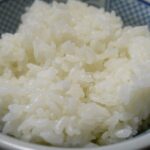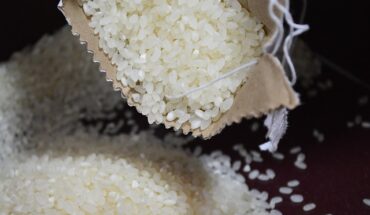Rice is a staple food for billions worldwide due to its versatility, affordability, and nutritional value. It’s also one of the best grains for long-term storage, making it an excellent option for emergency preparedness and survival scenarios. Rice’s longevity depends on the type of rice, the storage method, and environmental factors like temperature and humidity. Let’s explore how long rice can be stored and its value as a survival tool.
Types of Rice and Shelf Life
Different types of rice have varying storage durations:
- White Rice (e.g., long grain, jasmine, basmati)
- White rice has the longest shelf life of all types. When stored in an airtight container in a cool, dry place, it can last 25-30 years or more. Its low oil content makes it less prone to oxidation and rancidity.
- Brown Rice
- Brown rice is more nutritious than white rice because it retains the bran layer. However, it has a shorter shelf life—about 6-12 months under normal pantry conditions. The natural oils in the bran cause it to go rancid more quickly. In an oxygen-free environment, you can extend the shelf life to around 2-5 years.
- Wild Rice
- While technically not an actual rice, wild rice has a shelf life similar to brown rice—6 months to 1 year in regular storage. Sealed in an oxygen-free container, it can last up to 5 years.
Best Storage Practices
To maximize the shelf life of rice, proper storage techniques are essential:
- Airtight Containers
- Store rice in airtight containers, such as Mylar bags, plastic buckets, or glass jars. Doing this prevents moisture and pests from entering and spoiling the rice.
- Oxygen Absorbers
- Using oxygen absorbers in containers can drastically extend rice’s shelf life. These packets remove oxygen from the sealed container, creating an environment that discourages mold growth and oxidation.
- Cool, Dark Environment
- Rice should be stored in a cool, dry, and dark area, ideally between 40-70°F (4 and 21°C). Avoid exposing rice to high temperatures or humidity, which can encourage spoilage or pest infestations.
Rice as a Long-Term Survival Tool
Rice is an essential food source for survival due to its long shelf life, ease of preparation, and nutritional benefits. It provides a reliable source of carbohydrates, which are crucial for energy. Here are several reasons why rice is invaluable for long-term survival:
- Caloric Density
- Rice is highly caloric, providing 130-150 calories per 100 grams of cooked rice. In survival scenarios, the high caloric content helps maintain energy levels, which is critical when food sources may be scarce.
- Easy Preparation
- Rice is simple to cook and only requires water and heat, which are relatively easy to obtain, even in emergencies. It can also be prepared in large batches, allowing for efficient meal planning.
- Versatility
- Rice can be paired with other foods like dried beans, freeze-dried vegetables, or dehydrated meats, making it a versatile base for various meals. Additionally, its neutral flavor complements a wide range of ingredients.
- Nutritional Support
- Though it lacks some essential vitamins and minerals, rice is a crucial part of many long-term storage plans when combined with other stored foods. It provides a steady source of carbohydrates, which helps sustain physical activity in emergencies.
- Affordability
- Rice is an inexpensive option for bulk storage. Preppers can stockpile large quantities of food at a relatively low cost, making it accessible to most people preparing for long-term survival.
Conclusion
When stored correctly, rice is a powerful long-term food source that can last for decades, making it ideal for emergency preparedness. White rice, in particular, stands out for its longevity, while brown and wild rice offer more nutritional value but require more careful storage. As a survival tool, rice offers the calories, versatility, and ease of preparation needed to sustain individuals during extended periods of food scarcity. Adding rice to your emergency stockpile is a practical, cost-effective way to ensure long-term food security. And be sure to check out our recommended multi-tools for camping.
References:
Disclaimer
We don’t claim to have all the answers. We seek to inform and equip you for survival and disaster preparation. However, please perform due diligence when discussing food safety. There are a variety of things that can go wrong and lead to food poisoning.














